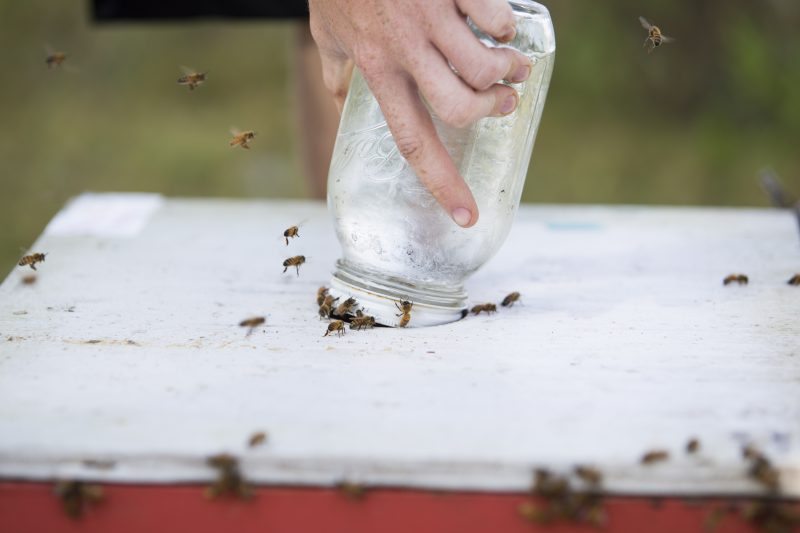Most Panhandle producers are removing and processing “the main flow” of honey at this point of the year. Once processing is complete, it’s a good time to turn attention to pest management and general hive maintenance.

Figure 1: Replacing a mason jar feeder of sugar water. Credit: Camila Guillen, UF/IFAS
–
It’s very important to monitor hives closely during the summer months, as varroa mites and small hive beetles are very active at this time. Consider treating when varroa reaches a 3% infestation level, or 3 mites per 100 bees. There are two test options that can help determine if your hive has reached the threshold, an alcohol wash or sugar shake. For detailed information on these procedures, please see, “Tools For Varroa Management” by the Honey Bee Health Coalition.
There are many treatment options, such as Apiguard, MiteAway II, and Hopguard that will help combat mites. There are two viable chemical controls for small hive beetles. GardStar, a soil drench pesticide for the perimeter and Check Mite +, a strip of material dosed with pesticide placed around the hive, both are effective. Always follow label instructions.
American or European foulbrood caused by a spore forming bacteria, is by far the most damaging disease that can occur to a hive. However, if found early, the hive can be treated with Terramycin dust.
For general hive maintenance, remember it’s quite hot in the Panhandle, even throughout the fall. Be sure that the hive is well ventilated. By now a good amount of honey has been removed, so feed your colonies, if light. As a special note, remember that Florida black bears are active this time of year. Although they pose a minor threat to bee colonies, it’s always wise to have preventative measures in place. Investing in an electric fence is probably the best deterrent. However, for nuisance bear issues please call the Florida Fish and Wildlife Conservation Commission’s Wildlife Alert Hotline at 1-888-404-3922.
Following these hive management measures will help ensure your honey production will yield great results year after year. Call your local county extension office for more details.
–
Information for this article can be found in the UF/IFAS EDIS publication, “Florida Beekeeper Management Calendar” by Dr. James D. Ellis and C.M. Zettel Nalen.
- Managing Pine Stands for Straw Production - January 10, 2025
- Disaster Preparedness for the Ranch - June 21, 2024
- Winter Storm Damage to Your Honeybee Operation? Federal Disaster Assistance Program Could Help - January 12, 2024
